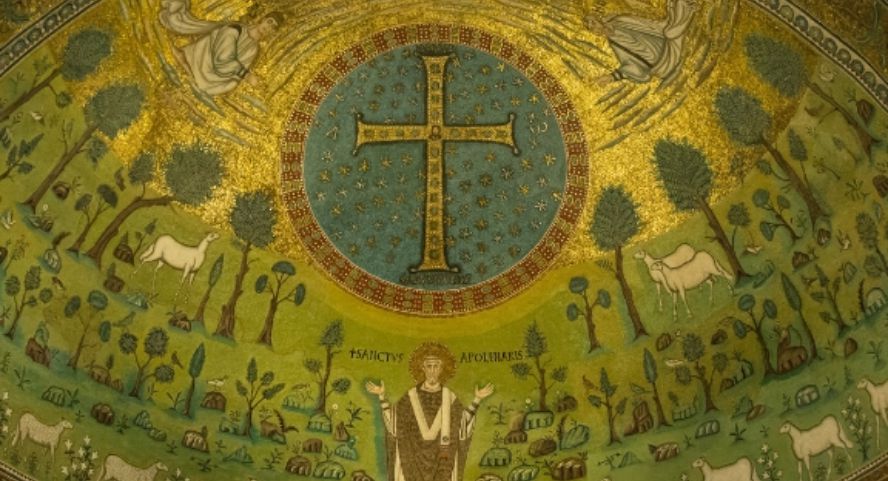In the footsteps of medieval Pauline Chancery
Janusz Zbudniewek
Uniwersytet Kardynała Stefana Wyszyńskiego w Warszawie , PolandAbstract
The keeping of the scriptorium and chancery by the first Polish Paulines dates back to the first half of the 15th century. It was mainly focused on copying liturgical and related books used for pastoral purposes, legal documentation and history, which included among others the history of the image of Our Lady (Translacio tabule) and the Chronicle of Wincenty Kadłubek. In the 16th century the scriptorium of Jasna Góra undertook the documentation of religious life in the sanctuary, including the first reports of pilgrims and records of confreres, as a response to the attacks of the Reformation. At the same time the scriptorium created the first cartularies and other books containing legal processes, inventories, as well as library and account records. The development process of the chancery has reached its peak in the early 17th century, when Fr. Mikołaj Staszewski (1595-1658), a former employee of the Curia of Poznań, later Provincial and General of the Pauline Order, entered the Board of the Order and introduced a new style of copying files. He also initiated the process of writing Pauline chronicles – first of the Polish Province and then of the whole Order, and introduced relevant secretarial standards to the religious constitution, of which he was the main inspirer and contractor. Currently the Polish Pauline Archives store 71 medieval manuscripts from Polish scriptoria, and more than 40 cartulary books from the modern era, among which only one Formulare obedientiarum salutationum et epistolarum variarum of Dionizy Klękowski (1599-1675) contains 1053 copies of various documents and correspondence from the period 1367-1673.
Keywords:
Medieval Chancery, Pauline OrderReferences
Archiwalia z Archiwum na Jasnej Górze.
Archiwalia z Biblioteki Uniwersytetu w Budapeszcie.
Constitutiones Religionis s. Pauli Primi Eremitae, Viennae 1646.
Constitutiones Religionis s. Pauli Primi Eremitae, Romae 1725.
Decalogus de b. Paulo heremita, Cracoviae 1532.
Declarationes constitutionum Ordinis s. Pauli Primi Eremitae, Roma 1516.
Formularium maius ordinis sancti Pauli Primi Heremite. Textedition des Pauliner-Formulariums aus der ersten des 16. Jahrhunderts (Cod. Lat. 131. der Universitätbibliothek zu Budapest), mit einem Anhang: Fragmentum formularium Stri¬goniense Paulinorum, hsgb. B.F. Romhányj – G. Sarbak, Szent István Társulat. Az Apostoli Szentszék Könyvkiadója, Budapest 2013.
Gyöngyösi G., Directorius singulorum fratrum officialium, b. m. i r. wyd., tłum. K.S. Szafraniec – B. Degórski, „Studia Claromontana” 18 (1998) 437-5 02.
Jasnogórski rękopis „Regestrum Confraternitatis Fratrum s. Pauli Primi Eremitae” z lat 1517-1613, do druku przygotował J. Zbudniewek, „Studia Claromontana” 6 (1985) 240-374.
Domokos P., A Magyar nyelvemlék Częstochowaban 1501-böl, „A Magyar Nyelv” 4 (1966) 489-492.
Kowalska-Urbankowa Z. – Zbudniewek J., Katalog rękopisów Biblioteki Paulinów w Krakowie na Skałce, „Studia Claromontana” 8 (1987) 277-280, 297-299.
Kunczyńska-Iracka A., Ilustracje kroniki ojca Pokorskiego, „Polska Sztuka Ludowa” 22 (1968) nr 1/2, 61-66.
Malyusz E., Zakon Paulinów i Devotio moderna, w: Medievalia w 50 rocznicę pracy naukowej Jana Dąbrowskiego, red. J. Garbacik, Warszawa 1960, 265-269.
Molnár I., A magyarországi pálasok „Zöld Kodex”-ének Veszprém megyei regesztái, „A Veszprém Megyel Muzeumok Közleményei” 7 (1972) 301-312.
Podejko P., Nieznani muzycy polscy: kompozytorzy, dyrygenci, instrumentaliści, wokaliści (1572-1820), Bydgoszcz 1966.
Przeździecki A., Pieśń Bogarodzica wraz z nutą z rękopisu częstochowskiego w końcu wieku XV, „Biblioteka Warszawska” 1 (1866) 309-328.
Romhányi B., A lelkiek a földiek nélkül nem tart-hatók fenn: Pálos gazdálkodás a középkorban, Budapest 2010.
Sarbak G., Miracula sancti Pauli primi eeremite. Hadnagy Balint pálos rendi kezikönyve, Debrecen 2003.
Szombathelyi Th., Zachęty z okazji wizytacji, z węg. tłum. E. Kamocka – M. Stós, wstępem poprzedził J. Zbudniewek, „Studia Claromontana” 20 (2002) 325-335.
Szütz J., A ferences obszervancia és az 1514. évi paraszthá-ború. Egy kódex tanúsága, „Levéltári Közlemények” 43 (1972) 213-263.
Weinrich L., Das ungarische Paulinerkloster Santo Stefano Rotondo in Rom (1404-1579), Berlin 1998.
Weinrich L., Hungarici monasterii ordinis S. Pauli primi Eremitae de Urbe Romana..., Roma 1999.
Wolny J., Łaciński zbiór kazań Peregryna z Opola i jego związki z tzw. „Kazaniami Gnieźnieńskimi”, w: Średniowiecze. Studia o kulturze, red. J. Lewański, t. 1, Warszawa 1961, 215-219.
Woronczak J., Bogurodzica, Warszawa 1962.
Zbudniewek J., Kopiarze dokumentów Zakonu Paulinów w Polsce do końca XVII w., ABMK 34-35 (1977) 293-344, 145-194. (Crossref)
Zbudniewek J., Mikołaj Staszewski (1595-1658), PSB 42, Warszawa 2004, 527-530.
Zbudniewek J., Na tropach Graduału Paulinów z 1596 r., „Studia Claromontana” 30 (2012) 259-278.
Zbudniewek J., Pokorski Bartłomiej Innocenty (1656-1734), PSB 27, Warszawa1982, 238-240.
Zbudniewek J., Stanisław z Oporowa, zwany błogosławionym, w: Polscy Święci, red. J. Bar, t. 5, Warszawa 1985, 32-60.
Zbudniewek J., Żydek Wacław, w: Słownik pracowników książki polskiej, t. 2, Warszawa – Łódź 1986, 246.
Zwiercan J., Komentarz Jana z Dąbrówki do kroniki mistrza Wincentego zwanego Kadłubkiem, Wrocław 1969.
Uniwersytet Kardynała Stefana Wyszyńskiego w Warszawie
License
Papers published in Vox Patrum are covered by the Attribution-NoDerivatives 4.0 International (CC BY-ND 4.0) licence. Authors and users can use published works licensed under the CC-BY-ND since 2018. For earlier publications, copyrights are available under fair use rights in accordance with the Act of February 4, 1994 on copyrights and related rights.







